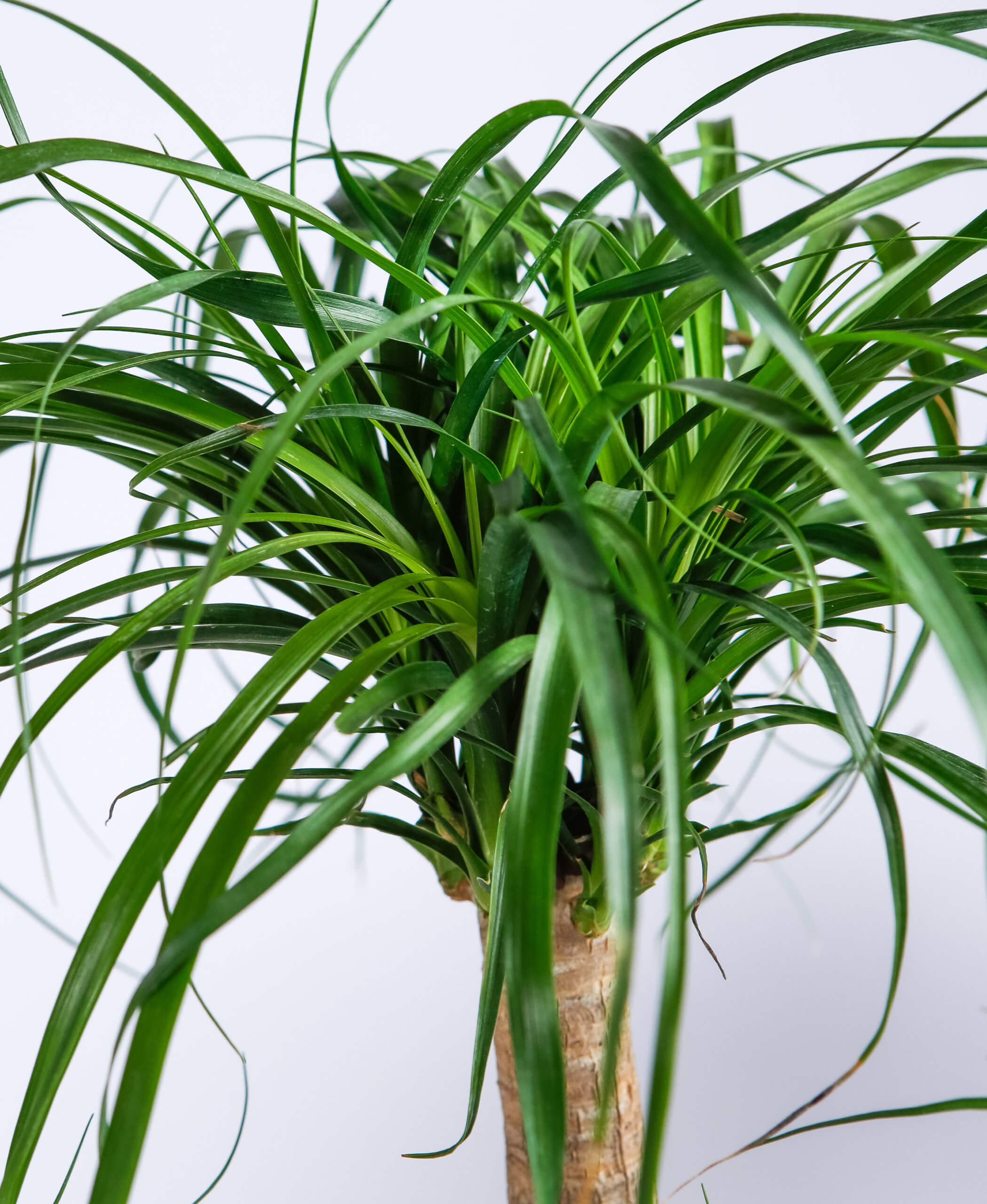Watering Issues
Let’s check in on your watering. Ponytail palms prefer to dry out fully between watering, so it’s important to test the soil before giving your plant a drink. You’ll only want to water once 100% of the soil volume is dry.
You can either test the soil with your finger or use something like a wooden chopstick. If it comes up with wet soil, then check on it again in a few days. If it comes dry, then you can water thoroughly around the pot until water starts to drain into the saucer. Make sure to discard any excess water to avoid soggy soil and ‘wet feet’ which can lead to root rot.
Watering your ponytail palm too frequently can lead to discolored leaf tips and leaf drop. Even though these plants are very drought-tolerant, it’s still possible to underwater as well. If you accidentally leave your ponytail palm’s soil completely dry for too long, you may see leaves go limp, droop, and possibly start to brown and curl. You may also notice the trunk start to wrinkle and go limp. If the soil is extremely dry all the way through the pot and you’re noticing signs of extreme underwatering, a thorough soak is in order.
Here’s how to bottom water your Ponytail Palm:
- Place your plant in your sink or tub without the saucer. Fill your basin up with about 3-4″ of water. Make sure the water isn’t hot!
- Allow your plant to soak up water through the drainage hole in the bottom of the pot for at least 45 min.
- Feel the top of the soil after your plant has been soaking–has the water reached the top 2-3” of soil?
- If not all the soil feels saturated, water your Ponytail Palm lightly from the top of the soil to help speed up the saturation.
- When your plant’s soil is evenly damp, drain the sink/tub and allow the plant to rest while it drains thoroughly. Place the plant back on its saucer and back in its proper spot.
Now let’s clean up your plant. This allows the plant to direct its energy to new healthy growth.
- Remove the entire brown fronds (they will not turn green again) or the affected portion with a pair of sharp scissors or pruning shears.
- Wipe the blades of your scissors with rubbing alcohol between each snip.
- You may need to trim your plant in stages because you never want to remove more than 20% of the affected leaves at one time–this could shock your plant.










